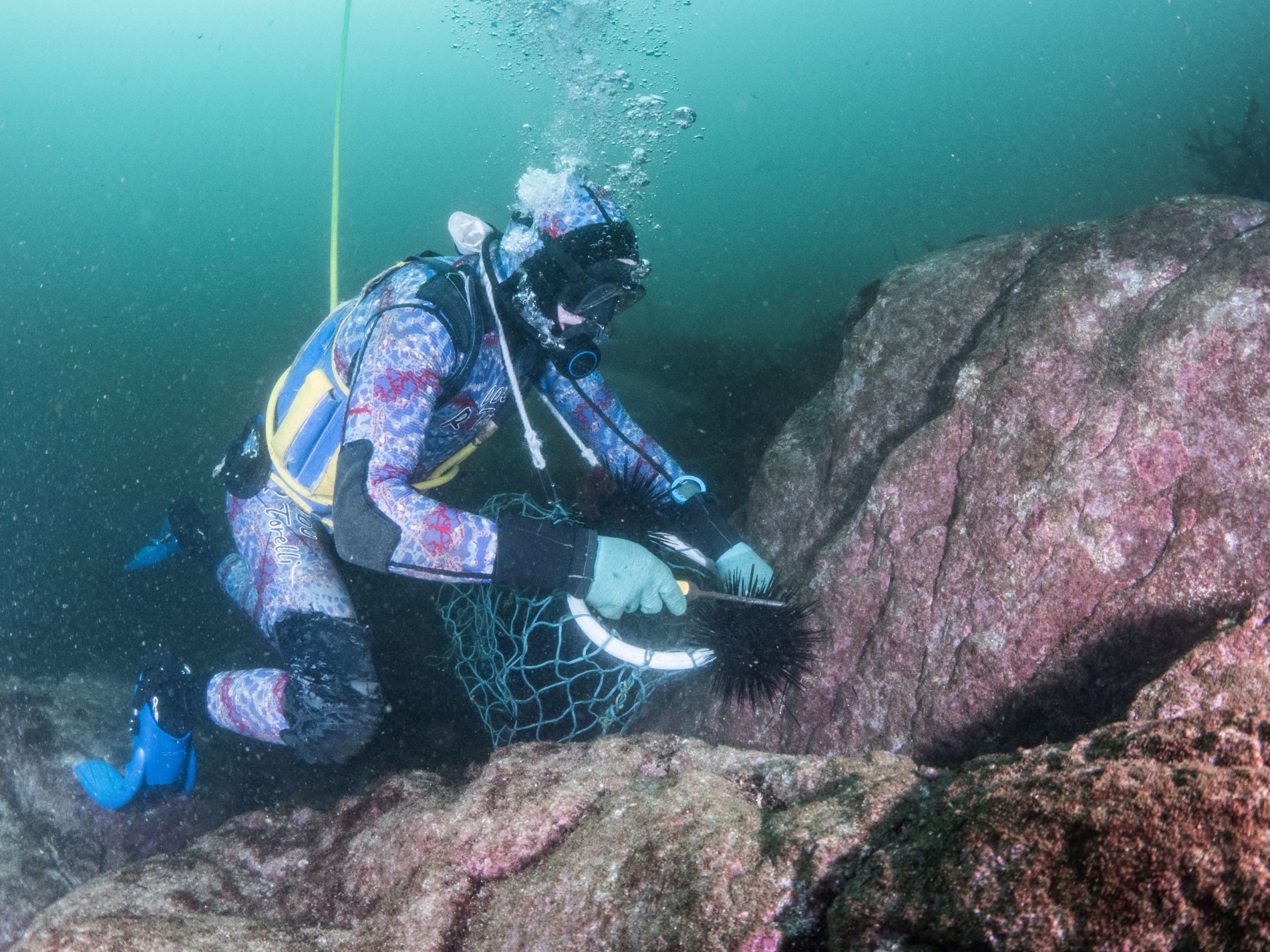Commercial Catch and Effort
Commercial harvesting began in March 2009. The total annual harvest began at less than 10 tonnes a year and gradually increased to 100 tonnes in 2013/14, followed by a decline in 2015 following the closure of the main processor (see the Long-term Catch tab in the Catch and Effort figure above). A subsidy was introduced for the 2016/17 season to encourage harvesting of urchins as a way to prevent extensive barrens forming. The catch in the most recent 2020/21 season increased to 496 tonnes from the previous year’s catch of 361 tonnes. In total the commercial harvest has removed more than 2000 tonnes of Longspined urchins over the last 13 years.
Effort for the fishery is focused between January and June, which is complementary to the spawning season which occurs around August (Ling et al. 2008). In the 2018/19 Season, beginning September 1st 2019, there were 29 divers involved in the fishery. Most fishing effort occurs from December/January to June when roe quality is suitable for harvest (see the Effort tab in the Catch and Effort figure above). The mean depth of fishing has increased markedly since the beginning of the fishery, indicating that divers are forced into deeper depths to maintain catch rates.
In the logbook data, divers record the estimated depth of their catch. The annual mean depth of fishing has increased since the 2015/16 season until last season, levelling out during the 2020/21 season (see the Depth of Catch tab in the Catch and Effort figure above).
Catch by Zone
A subsidy was paid to commercial divers of Longspined sea urchins from late 2016 to early 2019 at a cost of $0.75/kg wet weight of harvest in all areas in an effort to control increasing sea urchin numbers and associated destructive grazing of kelp forests. The structure of the subsidy was changed on March 11th 2019 with different rates for different areas of the coast in an attempt to spread catch along the coast. Payment structure from March of the 2018/19 season was $0.50/kg in the northern zones, $0.75/kg in the central zone and $1/kg in the southern zone. A new subsidy structure was implemented from September 1st 2019 (the start of the licensing year) with $0 subsidy in the northern zone, $0.75 in the central zone and $1.50 in the southern zone.
Catch has historically been concentrated in the northern zone, making up almost 100% of the relative catch between the zones until the 2016/17 season. With the introduction of the first subsidy ($0.75/kg across the board) catch began to spread to the central and southern zones, with an increase for the 2017/18 season. A further shift in catch southward occurred in the 2018/19 season in response to the spatial structuring of the subsidy (N $0.5/kg, C $0.75/kg, S $1/kg).
Comparing relative catch between zones with relative effort between areas shows that for the 2018/19 season the relative effort in the southern zone increased proportionally more than the catch. This was because the subsidy was increased in 2019 to be higher per weight of catch in the southern zone compared to the northern and central zones.

Credit: Matt Testoni



